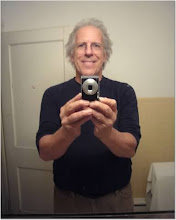Why reading aloud is a vital bridge to literacy
Advice that children should still be read to as teenagers makes sense, as they learn the complex gear changes between speech and prose
Iwas very lucky to have been brought up in a household where my older brother and my father read out loud to me as a teenager. It was a form of conversation or entertainment. They were “hey-listen-to-this” moments, taking in Dickens, Hardy, Catch-22, Catcher in the Rye, the Molesworth books, newspapers, magazines, Konrad Lorenz’s science books, Alan Moorehead’s accounts of exploration and any random passage from their studies. Come to think of it, my father didn’t stop! In his 70s, when I was in my 40s, my father still read me the stories he wrote about his childhood. His intonation, his pronunciation of Yiddish, our cackling at his jokes live on.
This week, it was suggested that in order to foster a love of reading, parents and teachers should continue reading aloud to children well into their teen years. To get a handle on why doing so is important, we have to take a step back and look at something that is right in front of our noses but not always obvious.
The way we speak is very different from the way we write – especially from the way we write continuous prose. When we speak, we hesitate, we contract phrases (as with “wouldn’t’ve”), we repeat ourselves, we often leave gaps for others to fill in. Or we might just tail off. We use intonation and gesture to indicate or colour meaning. We use more pronouns than we do when we write, because we can specify who we are referring to with gesture and tone. We use a lot of ums and errs and “you knows” to give ourselves time to think or to hold a listener’s attention. And we avoid front-loading sentences with phrases and clauses that delay getting to the main point.
Continuous prose flows without hesitation. Sentences close. We can front-load, refer backwards and forwards, organise “points” in an argument. We can avoid repetition, and use syntax and vocabulary for emphasis colour. “Who”, “which”, “that” and “where” clauses get more use in writing than in speech.
What follows from this is that in order to understand and be able to write continuous prose, we need to spend a good deal of time immersed in it. One way to do this is to hear it read out loud. This gets round that moment of resistance when we see a slab of writing on the page. I read continuous prose every single day of my life but if you tell me that I’ve got to read 10 pages of something, study it closely in order to extract some information (a common task in schools), I have at the very least the feeling: can I put it off till tomorrow? I’ve seen my own children thinking up every possible ruse to avoid it, too.
Some books are better (and more fun) for reading out loud than others. One of the reasons we invented continuous prose was to lay out an argument, piling points on top of each other, weighing one view against another, even to invite the reader to look back at something earlier or later in a book. It can be tough going listening to this kind of writing if you don’t have the book in front of you. Ideal for reading out loud are things such as short stories, poems, plays, modern novels, journalism, texts of speeches, biography, and narratives connected with scientific discovery, history, geography and the arts.
Ideally, any teenager being read to would have the text in front of them, so that we can stop and talk about things as we go along, referring back to what’s just been read. This means we make bridges, from the written to the oral and back again.




No comments:
Post a Comment